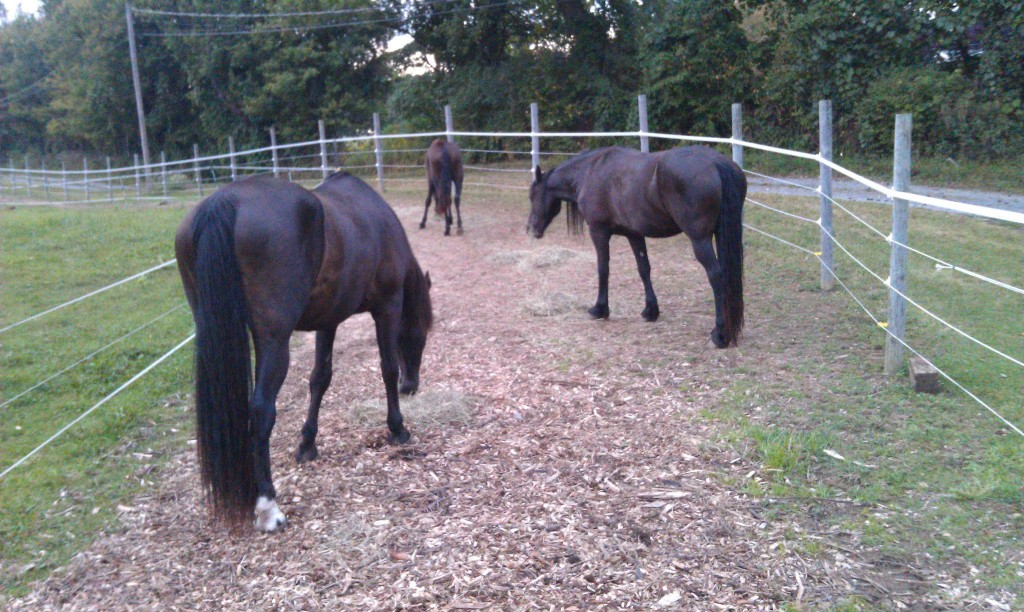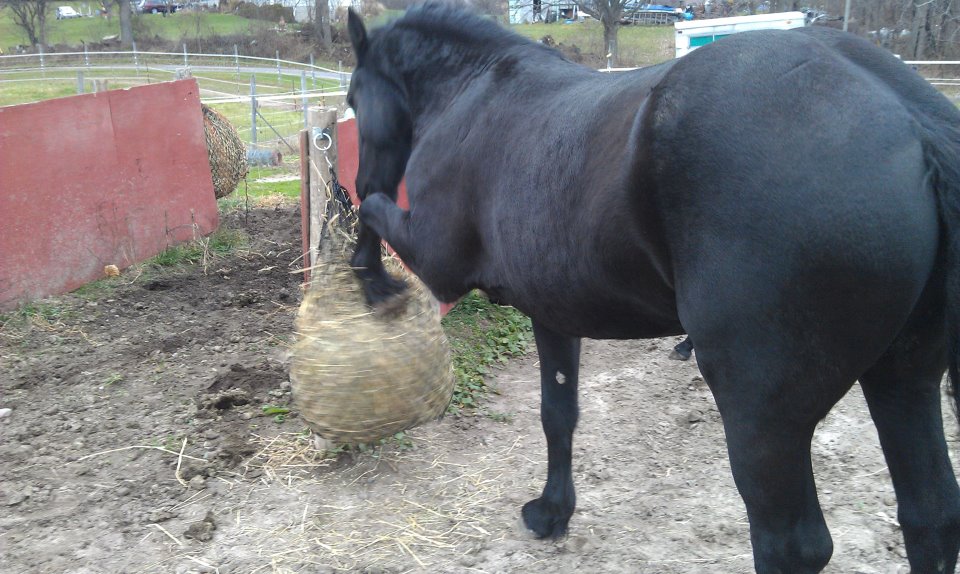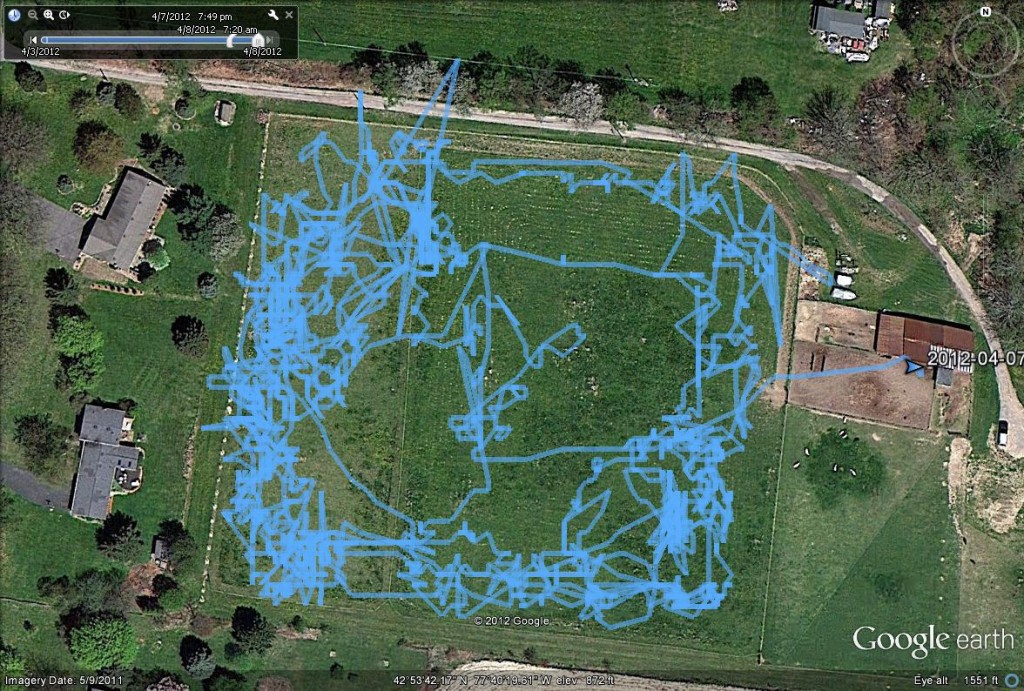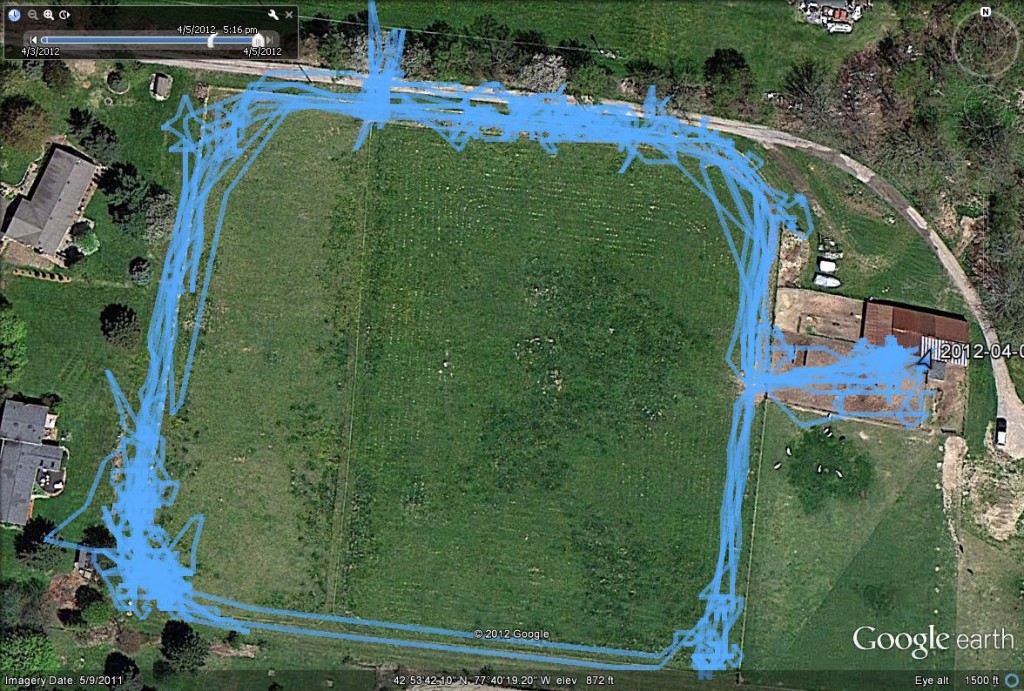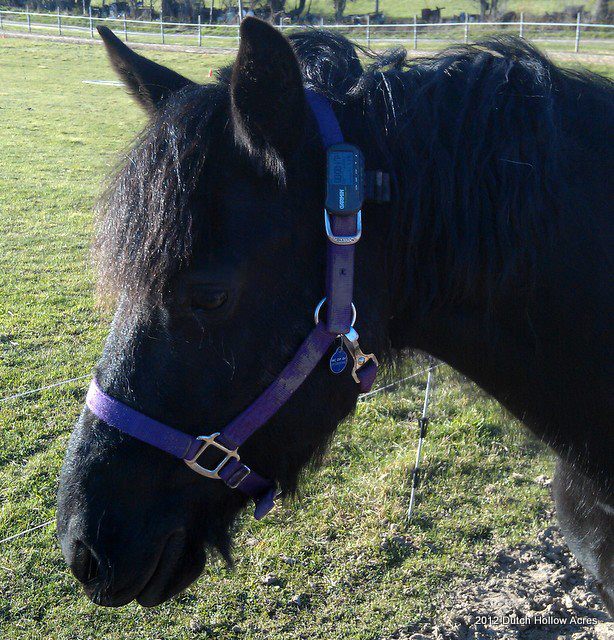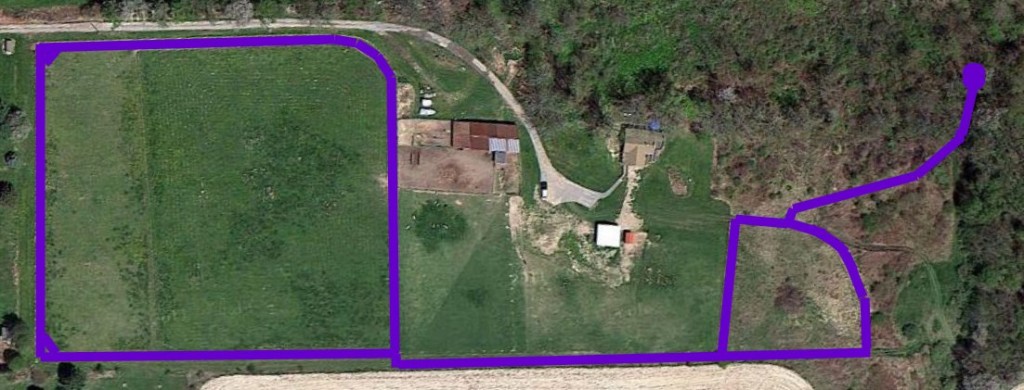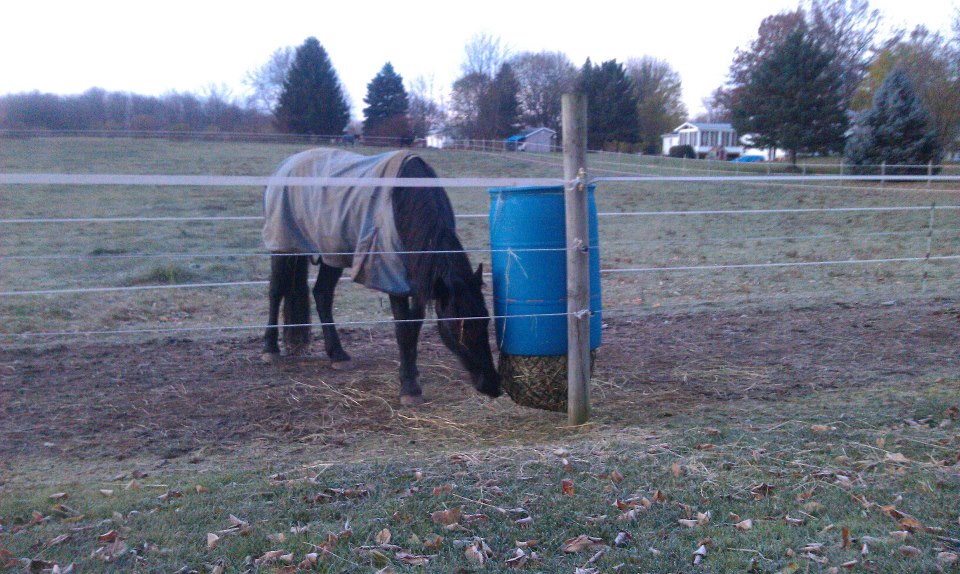The following page is dedicated to our experiment using the Paddock Paradise Track System made popular by Jamie Jackson. (Learn more here)
Paddock Paradise is a natural horsekeeping method which attempts to mimic the movements and feed intake of the wild horse. Horses are grazing and herd animals frequently found in the wild in arid climates and they move 20+ miles a day in search for food, water, shelter and minerals. The traditional method of keeping horses in stalls, small paddocks or even lush green pastures is not natural to the horse and frequently causes many behavioral issues as well as obesity, brittle hooves and founder.
To keep the horses moving and provide a more natural feeding program while keeping their environment diverse and interesting a track system is used. In the fall of 2011 we have implemented our first tack circumferencing a 4 acre pasture. The main track is 12′ wide and corners of the track have been cut off allowing for large loafing/feeding/turn around areas. Shelter, water, and minerals are still currently housed in the old “mud paddock.” Here is a drawing we made in our planning stages of building the track.
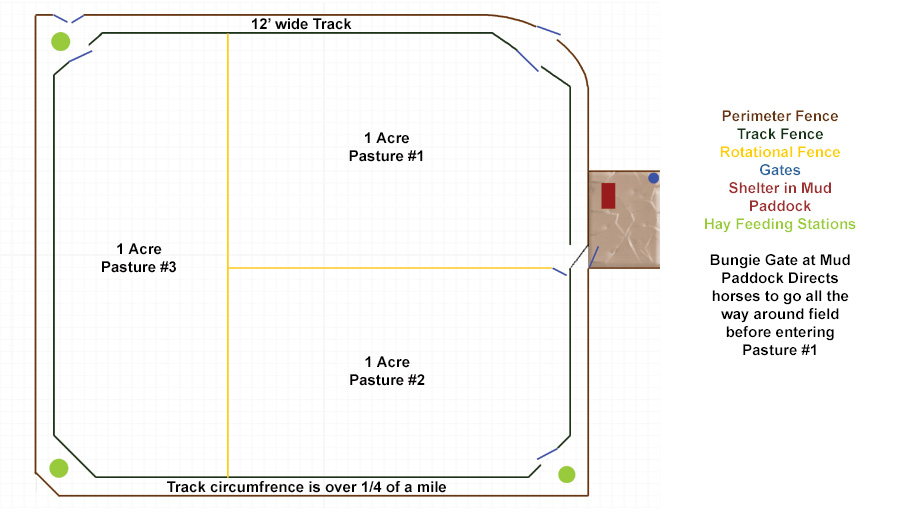
Feeding methods
I’ve been experimenting with 3 different feeding methods
- Spreading loose hay around the entire track
- Using slow mesh hay nets (SMHN) at feeding stations
- Rotational grazing on the inner pasture
Loose Hay: By far the most efficient and natural way of feeding horses on the track. It’s easy for me to fork hay off a round bale into a wheelbarrow and put small handful size piles (100 or more) around the track. The small piles encourages the horses to keep moving in search of more food. I’ve noticed that the horses will go around the track once picking out that they like most in the piles and then continue to circle the track each time picking a little bit more out of the piles.
SMHN: Spreading hay on the ground works great if the ground is dry and there’s no wind. Unfortunately rain, wind and snow make feeding that way unproductive. I use SMHN at feeding stations around the track to help keep the hay off the ground, dry and eliminate waste during in climate weather. I placed rubber mats to help when there’s deep mud so they have someplace dry to stand.
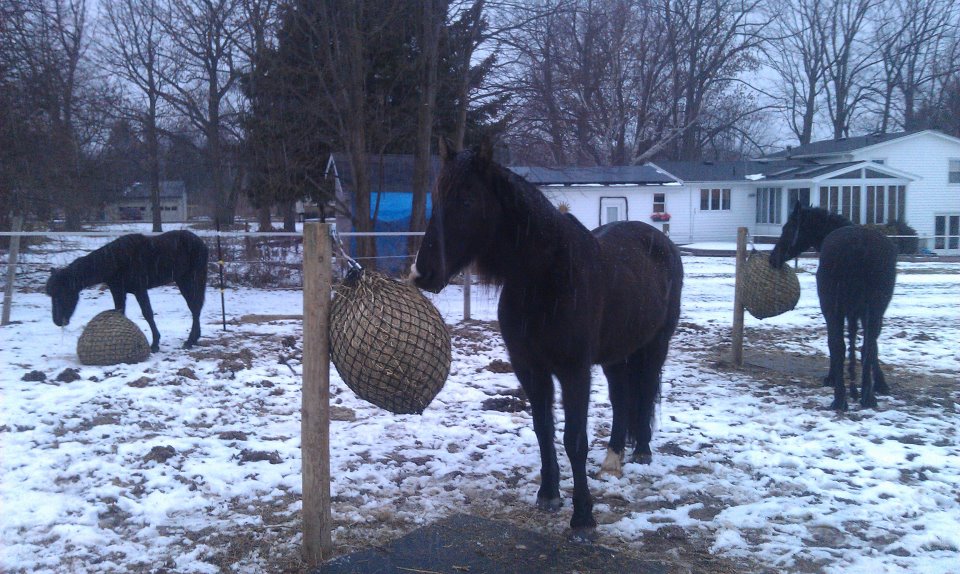
Close up of how I attach the SMHN to the feeding stations.
NOTE: Do NOT have shoes on your horses when feeding with hay nets. A pawing horse can get stuck quickly. Barefoot and halter free is the only way they should be turned out.
Grass: I have a busy life too as a full time farmer and a full time day job and sometimes I just don’t have time to spread hay and that’s where the center field comes in handy. Just open up the gate and voila, they have access to traditional grass grazing.
=====================================================
Tracking Movement:
So how do you know it’s working? The biggest comment I get from folks is… “but my horse has run-in board and is kept in a large pasture they can move all the time.” I tell them that’s a great start but unfortunately the horse is still on lamanitic grass and though you think they are moving all the time so far my findings show they really don’t!
How do I know? By GPS tracking of course!
3 Acre Grass Turnout (good):
- Time: 12.5 hours
- Distance: 2.2 miles
- Speed: never went faster than a walk
================================================================
Feeding SMHN on the Track (better):
- Time: 11.5 hrs
- Distance: 3.3 miles
- Speed: 10x during the day was at a strong trot or canter
Spreading Hay Around the Track (best):
- Time: 8hrs
- Distance: 3 miles
- Speed: 8x during the day was at a strong trot or canter
Sorry I lost the photo of this GPS Track but here is Cotton showing how the GPS is attached to her halter.
Feeding Summary
| Feeding Method | Hrs | Distance | Speed |
| 3 Acre Pasture | 8 | 1.41 miles | Slow walk no running |
| Track – SMHN | 8 | 2.30 miles | Strong trot/canter 8x |
| Track – Loos hay | 8 | 3 miles | Strong trot/canter 8x |
Walkabout
Here’s a video walkabout of our track 1 year after we put it in.
================================================================
Stage 2:
We have extended our track! The summer was really hot and dry which let me open up a section that is usually wet and swampy for the horses to use. When the mushy ground returns this new section will once again be closed.
New Barrel Feeders
I’ve recently acquired (8) 55 gallon blue barrels which I’m slowly converting into feeding stations for the horses. So far I’m LOVING these feeders. They are so easy to fill, keep the hay dry and the hay is low to the ground allowing the horses to eat in a more natural position with their heads down.
Here’s a photo of Cotton munching away. CLICK HERE to see how I put them together.
